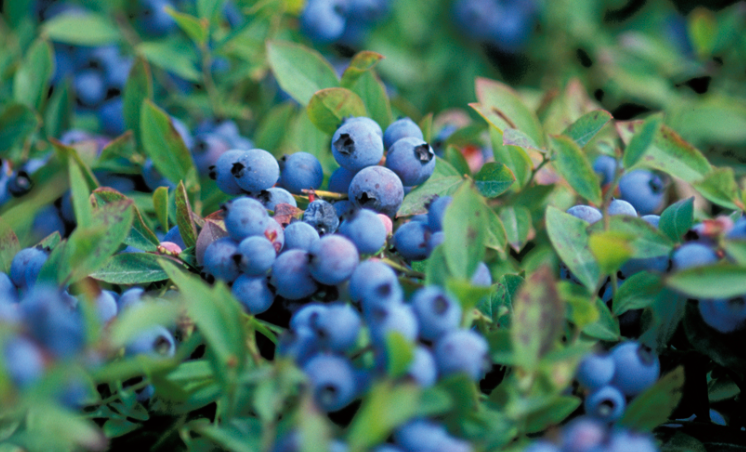A New Dietary Recommendation to Boost Heart Health—Bring on the Berries, Tea and Cocoa
By Kitty Broihier, MS, RD, LD
A month dedicated to hearts is romantic, but it can also be an opportunity to rededicate ourselves to taking care of our hearts. February is Heart Month, when the American Heart Association encourages us to adopt heart-healthy lifestyle and eating habits, such as consuming a wide variety of colorful fruits and veggies (including wild blueberries, of course).
In general terms, produce provides nutrients, fiber and other compounds that support a healthy cardiovascular system. Now a new recommendation published by experts from the Academy of Nutrition and Dietetics (AND), gives us something more specific to aim for in our pursuit of a heart-healthy diet: getting more flavan-3-ols.
What are flavan-3-ols?
Don’t let the science-y name scare you off! Flavan-3-ols are phytonutrients, also known as bioactives, or bioactive food compounds, (a term that the National Institutes of Health suggests we use for substances that provide health benefits other than those of basic nutrition). Flavan-3-ols are found in common foods and drinks like berries, apples, cocoa, red wine and tea. Like the anthocyanins in wild blueberries, flavan-3-ols are part of the flavonoid group of phytonutrients. Although flavan-3-ols are not essential for our survival like vitamins and minerals are, research has confirmed a role for them in helping to prevent and lower the risk of chronic diseases. “Consuming foods that are high in flavan-3-ols and low in added sugars and saturated fat can help reduce the risk of developing cardiometabolic diseases like Type 2 diabetes and cardiovascular disease,” notes Taylor Wallace, PhD, CFS, FACN one of the Expert Panel who co-authored the recommendation.
How much do we need for heart benefits?
A systematic review of over 156 randomized controlled trials and 15 cohort studies (previously published in the American Journal of Clinical Nutrition) informed the group’s recommendation, and it was an involved 2 year-long process. From all that work, the group distilled a recommendation for the general adult population: consume a diet that provides 400-600mg of flavan-3-ols per day. This amount has been associated with reduced risks of cardiovascular disease and diabetes, and specifically with improvements in blood pressure, blood cholesterol and blood sugar levels. Scientists are still investigating exactly how these compounds work in the body, but it’s believed that much of their cardiovascular benefits stem from a combination of their antioxidant and anti-inflammatory effects, among others. The most documented benefit of diets higher in flavan-3-ols was improvements in vascular health (particularly in lowering blood pressure and boosting blood vessel flexibility) and blood glucose and lipid levels.
What should I eat to reach the recommended amount of flavan-3-ols?
Kim Stote, PhD, MPH, RDN, another member of the Expert Panel that co-authored the recommendation, says research shows that most men and women in the U.S. fall far short of the 400-600mg flavan-3-ol goal for heart benefits. “Data from the U.S. Department of Agriculture indicates that adults over age 20 currently consume about 170mg of flavan-3-ols per day. But it’s actually not that difficult to hit the mark,” explains Stote. “For example, you could meet the recommended level of flavan-3-ols by drinking 1-2 cups of brewed black or green tea, and eating ½ cup of berries and a small pear throughout the day,” says Stote. Consuming fruits and vegetables definitely makes it easier to reach the flavan-3-ol target.
Where do blueberries and anthocyanins fit in?
The flavan-3-ol content of foods and drinks varies widely, and there are many fruits and vegetables that don’t contain abundant flavan-3-ols, but have other important, health-promoting bioactives. This is why Dr. Wallace suggests (and health authorities agree) that eating a diet containing a plentiful amount and wide variety of produce is a smart health move in general. “I think diversifying the diet is always a good idea,” says Wallace.
“Blueberries of all kinds tend to have higher levels of anthocyanins than most other foods, but aren’t as high in flavan-3-ols as some other foods. So it’s a trade-off, and the two groups of compounds likely exert synergistic effects for health promotion,” explains Wallace. “I would argue that anthocyanins have as much—if not more—data that demonstrates their preventative cardiometabolic effects,” adds Wallace.
Keep in mind that all berries are healthy. Choose those that taste best to you (we are partial to the extra blueberry-ish taste and convenience of frozen wild blueberries), and eat them regularly.
Flavan-3-ol content of selected foods:*
Brewed green tea, 8 oz. 318mg
Brewed black, 8 oz. 277mg
Red wine, 5 oz. 16.6mg
Blackberries, 1 cup 63.7mg
Small apple 15.3mg
Blueberries, 1 cup 10mg
Raspberries, 1 cup 8.7mg
Strawberries, 1 cup 6.9mg
Red or green grapes, 1 cup 5.8mg
Cocoa powder, 1 Tablespoon 13mg
Sources:
* Kristi M Crowe-White, Levi W Evans, Gunter G C Kuhnle, Dragan Milenkovic, Kim Stote, Taylor Wallace, Deepa Handu, Katelyn E Senkus, Flavan-3-ols and Cardiometabolic Health: First Ever Dietary Bioactive Guideline, Advances in Nutrition, Volume 13, Issue 6, November 2022, Pages 2070–2083, https://doi.org/10.1093/advances/nmac105

